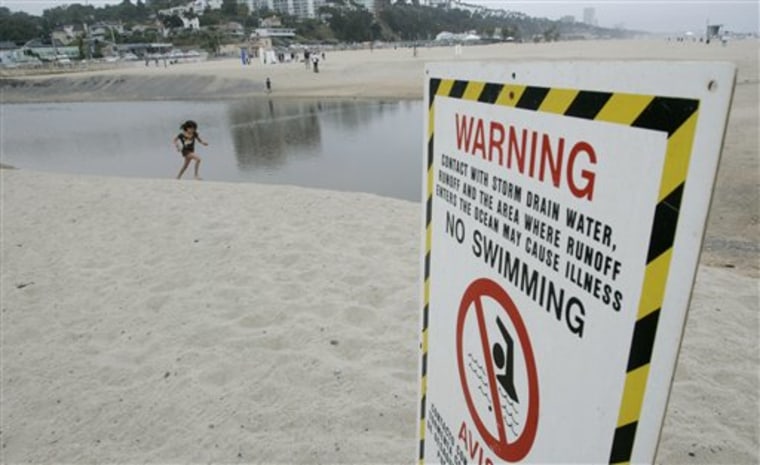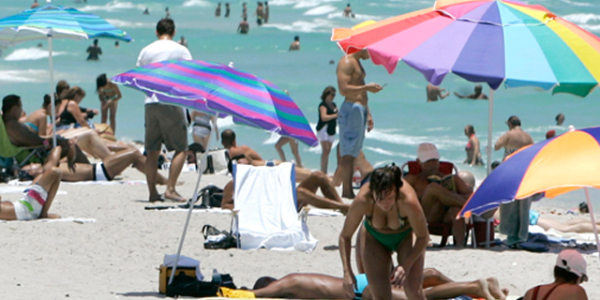What's the water like where you swim — not the temperature, but the quality? An annual report released Wednesday concluded that beach water quality is not improving across the country.
Nationally, 7 percent of water samples in 2008 violated health standards — indicating the presence of human or animal waste, according to the report by the Natural Resources Defense Council. That's zero improvement over 2007 and 2006.
"Pollution from dirty stormwater runoff and sewage overflows continues to make its way to our beaches," Nancy Stoner, co-director of the council's water program, said in a statement marking the 19th annual "Testing the Waters" report.
"Americans should not suffer the consequences of contaminated beach water," she added. "From contracting the flu or pink eye, to jeopardizing millions of jobs and billions of dollars that rely on clean coasts, there are serious costs to inaction."
The report, compiled using data from the Environmental Protection Agency, looked at more than 6,000 beaches and found several states well above that national average of 7 percent:
- Louisiana (29 percent of samples violated standards).
- Ohio (19 percent).
- Indiana (18 percent).
- Illinois (15 percent).
Delaware, New Hampshire and Virginia had the lowest violation rates, all with 1 percent.
Orange County beaches rate highest
The report also provides a five-star rating guide for 200 popular U.S. beaches, based on indicators of beach water quality, monitoring frequency and public notification of contamination.
Fourteen beaches rated five stars, and nine of those were in Orange County, Calif. The others were in Alabama, Maryland and Minnesota and New Hampshire.
Thirteen beaches rated just one star. Five were in Florida, four were in New Jersey, two in South Carolina and one each in Connecticut and New York.
Illnesses from polluted beach water include stomach flu, skin rashes, pinkeye, ear, nose and throat problems, dysentery, hepatitis, respiratory ailments, neurological disorders and other serious health problems, the defense council said. "For senior citizens, small children and people with weak immune systems, the results can be fatal," it added.
The report did find a 10 percent drop in days that beaches were closed or advisories issued, but attributed the decline to dry conditions and decreased funding for monitoring — not to any improvement in water quality.
"When the rains return," Stoner said, "so will pollution, forcing beaches to issue more closings and advisory days."
Lobbying for changes
The council urged Congress to approve a bill, the Clean Coastal Environment and Public Health Act, that would provide money for more beach water sampling and require use of faster testing methods.
Slideshow 6 photos
Famous beaches and their water
At the local level, the council said, governments could use tools that better retain and filter rainwater, letting it soak into the ground rather than directing it into gutters and stormwater drains. Examples of that are "rain gardens in yards, tree boxes on city sidewalks, green roofs that use absorbent vegetation on top of buildings, and permeable pavement that allows water to penetrate the material, instead of asphalt or concrete."
For individuals, Stoner had this advice: "If it has recently rained — or you see or smell a pipe discharging onto the beach — keep your head above water or avoid swimming altogether."
Check data for any of the 6,000 beaches surveyed by looking at state chapters at http://www.nrdc.org/beaches.

